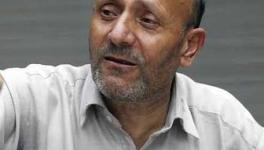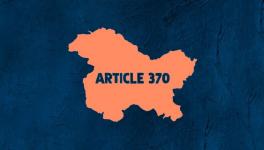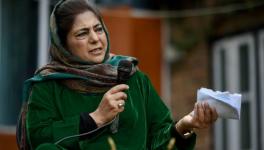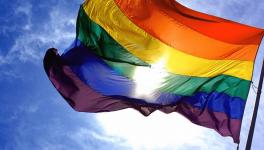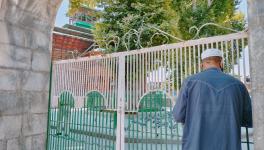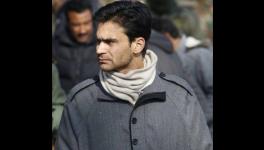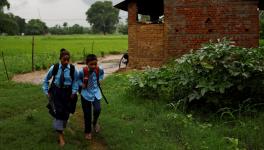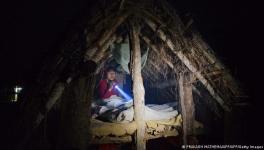Bhutan to Vote Tomorrow for Third National Assembly
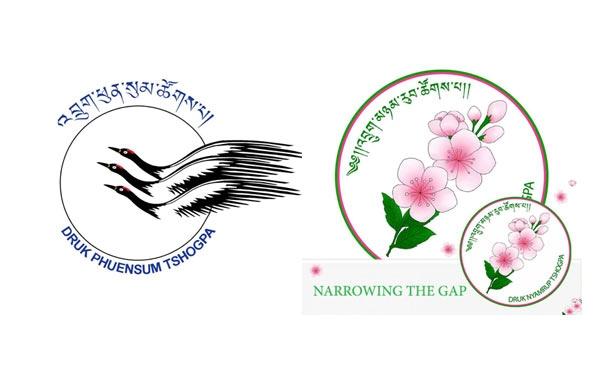
Image Caption: Party Symbols of the Druk Phuensum Tshogpa and the Druk Nyamrup Tshogpa, the two parties contesting in the final round. | Image Credit: Bhutan Times
Bhutan will go to the polls to elect the country’s third government and opposition tomorrow. The primary round concluded on September 15, and saw the ruling People’s Democratic Party (PDP) ousted from the race. The two parties that will battle it out are the Druk Phuensum Tshogpa (DPT) and the Druk Nyamrup Tshogpa (DNT). While the DPT is the more experienced of the two, the DNT has been able to make astute political calculations.
Though the DPT won in the most constituencies, the DNT walked away with the largest vote-share. Looking at the electoral map of Bhutan, one can see that the DPT decisively won in Eastern Bhutan while Western Bhutan was divided between the ousted PDP and the DNT. Commenters have speculated that those who voted for the PDP may now vote for the DNT. If that were to happen, the DNT may form the new government in Bhutan. This speculation is premised on the fact that both the PDP and the DPT were at loggerheads during the last term with the DPT sitting in the opposition.
Also Read | Foreign Policy or Domestic Policy: What Did Bhutan Vote for?
Bhutan’s Polity
Bhutan follows a bicameral system. The National Council – upper house – consists of 30 members, 25 are elected by the people and five are nominated by the Monarch. However, no member of the National Council can be a member of a political party. The National Assembly – lower house – on the other hand consists of 47 members, all of whom are elected. The members of the National Assembly are all elected on party tickets. However, the Constitution has engineered the lower house to consist of only two parties. Thus, the elections are conducted in two phases.
In the first phase, all registered political parties can contest. The two parties to win the most seats will then qualify to contest the second round. The second round exists solely to determine which party will form the government, and which party will be the opposition. The monarch under the Bhutanese Constitution acts as the executive head. Personal matters of the monarch cannot be discussed; however, the Constitution lays down a procedure by which the monarch can be forced to abdicate and the next in line will assume the titular role.
Also Read | A Rough Start to BIMSTEC’s Military Cooperation
Bhutan’s Economic Constraints
Pema Gyamtsho’s DPT has highlighted self-reliance as the chief promise if voted to power. Lotay Tshering’s DNT has focused its attention on accessible healthcare, particularly in rural areas. The million dollar question is where the money will come from. Thus, both parties have taken a stand on hydropower as a source of state revenue. Himal Southasian indicated that in 2017, Bhutan’s external debt amounted to 108.6 per cent of their GDP. At present, hydropower exports account for around 27 per cent of Bhutan’s revenue and 14 per cent of its GDP. Yet, 80 per cent of Bhutan’s external public debt was due to loans for hydropower projects, most of which are owed to India.
The Bhutanese – a news website – on the other hand pointed out that in terms of pricing, Indian buyers always pushed for excessively low rates. Each time, political intervention by Bhutan’s prime minister had to be resorted to before the rates could be revised. Only in one instance this was the revised rate higher than what Bhutan had asked for. All other times, the rates were higher than what the Indian buyers had quoted but lower than Bhutan’s estimates.
Also Read | Turning Neighbourhood Into a Troubled Zone
Role of Social Media
Though the elections have been perceived by those on the outside as a question of which big brother Bhutan is likely to side with for the next five years – India or China – reports indicate that Bhutan is not immune to social media and all its ills. Over the course of the campaign period, several commenters lamented the viciousness of the online debate, particularly those that linked party affiliation to ethnicity.
The Ngalop people inhabit eastern Bhutan and have traditionally held the political and administrative power in Bhutan. By comparison, the Sharchops – some claim that they are the true aboriginals – mostly inhabit Western Bhutan. One can conclude that the ethnic differences played out in voting patterns since the DPT swept eastern Bhutan, while the PDP and the DNT battled over the West.
Kuensel – Bhutan’s national newspaper – reported that DPT president, Pema Gyamtsho, lamented that the social media was dividing the country on party and regional lines. DNT president Lotay Tshering was more subdued in this regard, and called the anonymous writers on social media a disappointment.
Also Read | Learning from History: Renegotiating the India Nepal Treaty
Southern Bhutan
However, the elephant in the room in this face off is not so much the question of Ngalops and Sharchops, but the Lhotshampas. The Lhotshampas are the Nepali-speaking Bhutanese of Southern Bhutan. During the early 1990s, many were either forced into self-imposed exile. India was a mute spectator when the Lhotshampas fled Bhutan, and instead pushed them into Nepal where they resided as refugees in Jhapa. Those that remain in Bhutan as Bhutanese citizens live under the Thimpu centric national culture where the only recognised languages spoken and written in the country are Dzongkha and English.
There are contradictory reports about when Nepali speakers first entered Bhutan. Some sources refer to the late 1700s, which corresponds with the creation of Nepal. However, all sources agree that during the 1950s, there was a heavy inflow of Nepali-speaking migrants into Southern Bhutan. The Dorjis, a Kalimpong-based Bhutanese feudocratic family, were instrumental in encouraging the migration which provided much needed tax revenue to the Bhutanese government. In 1958, the King granted them citizenship after they put forth the demand.
In 1964, Jigme Palden Dorji was assassinated despite his proximity to the King. Thus, officials from Thimpu – less acquainted with the Nepali-speaking South – then administered the region. The rules that Dorji enforced regarding entry, residence and cultivation were not as strictly implemented after his death. In 1986, Bhutan’s Sixth Five Year Plan laid a heavy emphasis on ‘national culture’. The last straw came in 1988, when Bhutan’s census left out many of the people in the South despite them possessing valid citizenship documents. The outrage among the Lhotshampas resulted in political mobilisation at a time Bhutan was still a feudal monarchy. Thimpu, in all probability, may have viewed the events in the South with suspicion since it was barely a decade since a similar movement led to Sikkim’s annexation.
RP Subba in an article in Bhutan News Network, observed that in the first national election, the South had voted in favour of the DPT. However, when Jigme Y Thinley – the then DPT party president – was the prime minister, he passed unsavoury remarks about the South leading to fear and anxiety among the Lhotshampas. The South decisively voted for the PDP in 2013, essentially a vote against the DPT, the situation was tolerable, but not much different.
This time, the South has largely voted in favour of the DNT. One factor that played a pivotal role was that when Lotay Tshering spoke in Nepali at a rally in Tendu. This was a shift in how the Thimpu-based politicians approached the South. If anything, his promises of healthcare and civic amenities had a stronger resonance in much of the South since for, perhaps, the first time people could understand what the politician was saying. Lotay Tshering also reportedly hinted that Nepali could be used in official television broadcasts alongside English and Dzongkha.
Also Read | Remembering the 'Ethnic Cleansing' of Bhutan's Lhotshampas
What these elections represent is quite interesting. Social media has exposed and may widen the existing ethnic fault-lines in Bhutan. Language endeared a Druk politician to the marginalised south. Pema Gyamtsho may have worried observers in India about his party’s commitment to Bhutan’s self-reliance. Lotay Tshering may have endeared rural voters with his party’s promise of accessible healthcare. However, the problem of financing election promises will dawn on whoever forms the government.
Get the latest reports & analysis with people's perspective on Protests, movements & deep analytical videos, discussions of the current affairs in your Telegram app. Subscribe to NewsClick's Telegram channel & get Real-Time updates on stories, as they get published on our website.










